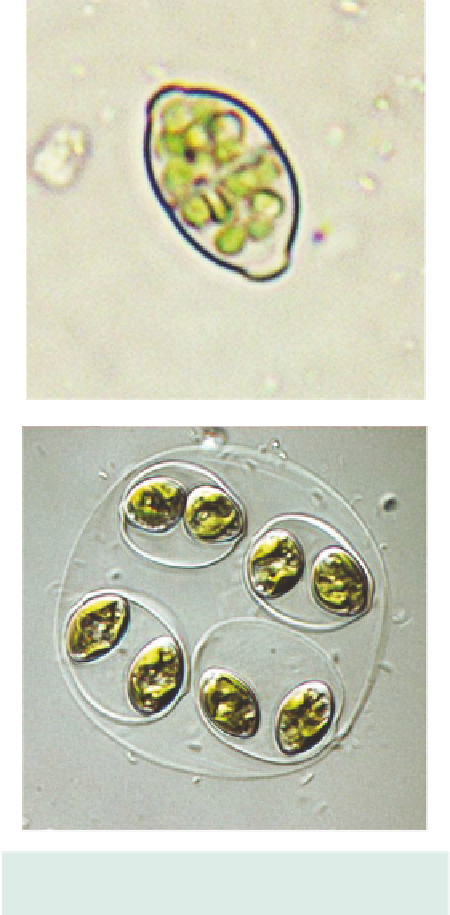Environmental Engineering Reference
In-Depth Information
walls fragmented. Up to 10+ cells per
colony, usually arranged in groups of 4
or8...........................
Westella
(see also key No. 98)
101
(91) (a) Cells roughly cylindrical (or sausage-
shaped, ellipsoidal or fusiform) and usu-
ally more than 2 times long as wide.
Colonies of usually single, but some-
times double alternating rows of 4-16 (32)
cells that are joined along the long axis.
.........................
Scenedesmus
Scenedesmus
isaverycommonandsome-
times abundant genus, especially found in
eutrophic and hypertrophic waters. Some
species bear spines, others ridges and
others no ornamentation. Cell sizes vary
greatly from species to species. When
abundant may impart unwanted odours to
drinking waters (Palmer, 1962). Chloro-
phyta. Plate XIV - showing some of
the various coenobium arrangements and
cell ornamentations for different species.
Fig. 4.50.
20 μm
NB. Some authorities re-classify spine-
bearing members in the genus
Desmod-
esmus.
20 μm
(b) Cells as long as wide or spherical to
very short cylinders joined end to end
..................................
102
Figure 4.49
Oocystis
. Top: Joined pair of cells, show-
ing disk-shaped chloroplasts and a polar swelling at
each end of the colony. Bottom: Pairs of daughter cells,
enclosed within two sets of mother cell walls. Repro-
duced with permission from R. Matthews.
102
(101) (a) Cells very short cylinders (2-6 μm
wide, 3-20 μm long) joined end to end
in groups of 2,3,4 etc. . ....
Stichococcus
(see also key No. 34)
surrounds 2-4-8 daughter cells. Chloro-
phytaPlateXIII.Fig.4.49......
Oocystis
(b) Cells as long as wide, spherical or glo-
bose in shape. . ....................
103
(see also key No. 209)
(b) Cells (3-9 μm wide) normally spher-
ical, without polar nodules. Mother cell
103
(102) (a) Cells with spines or projections
.................................
104


Search WWH ::

Custom Search